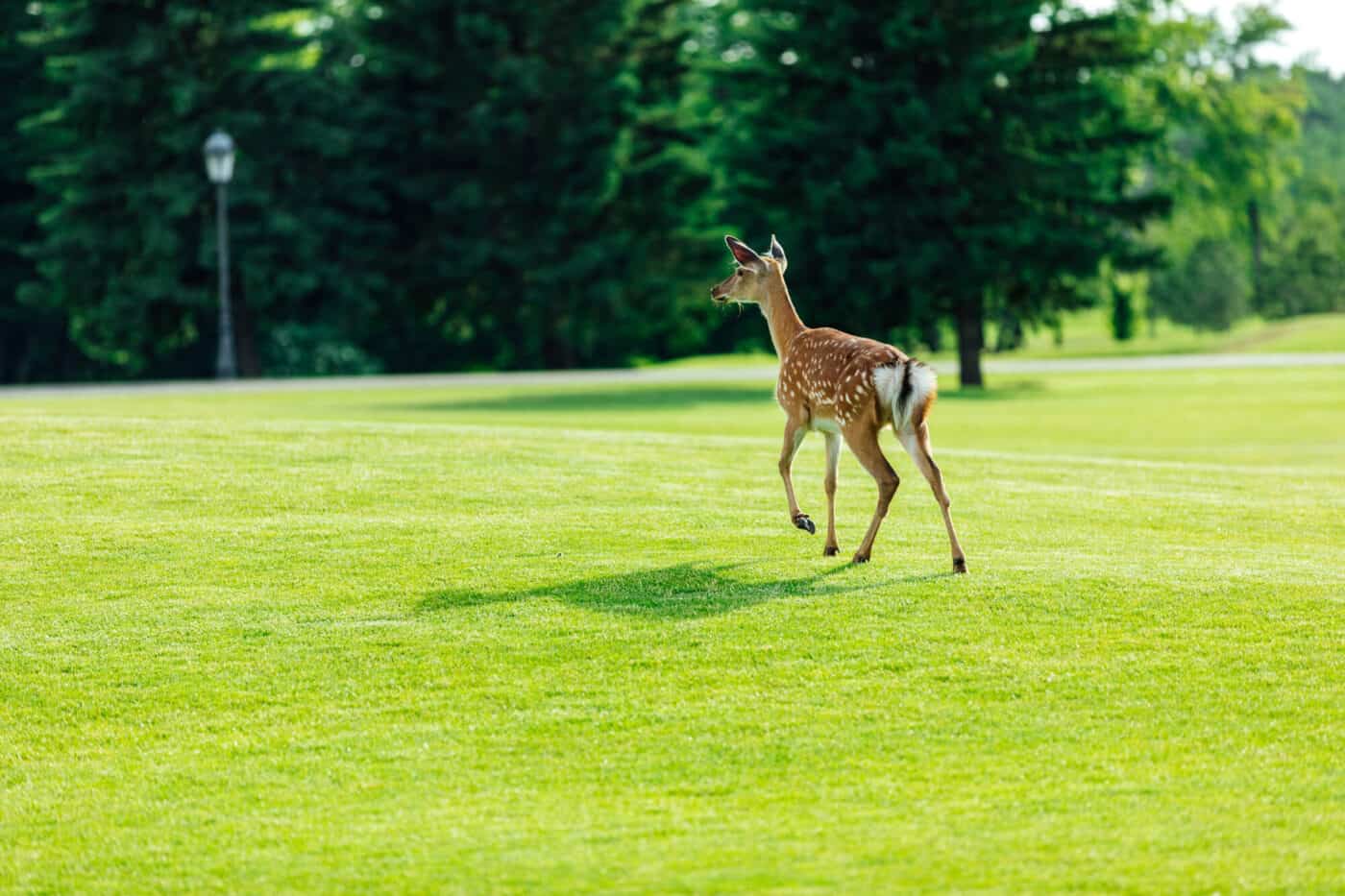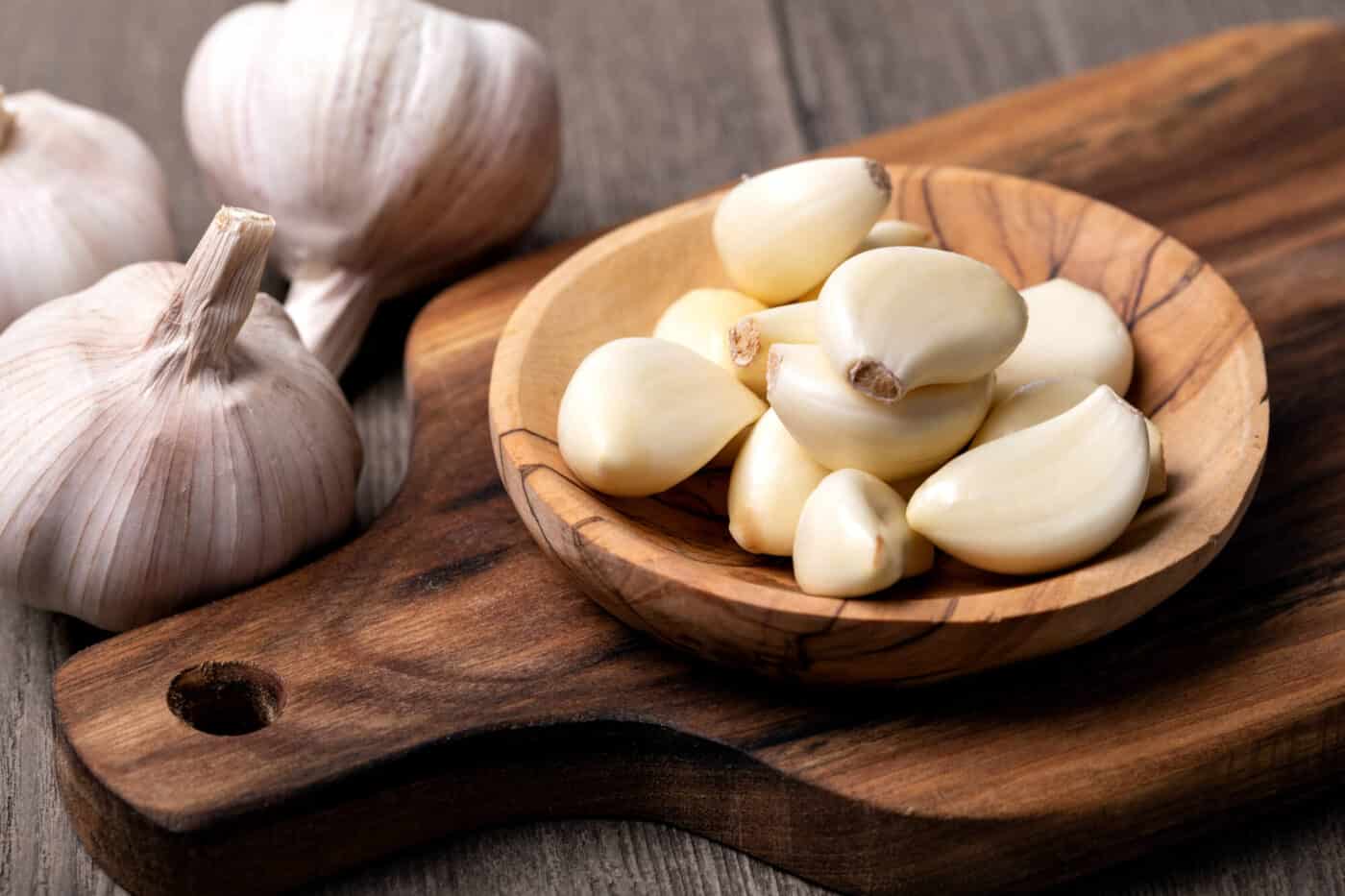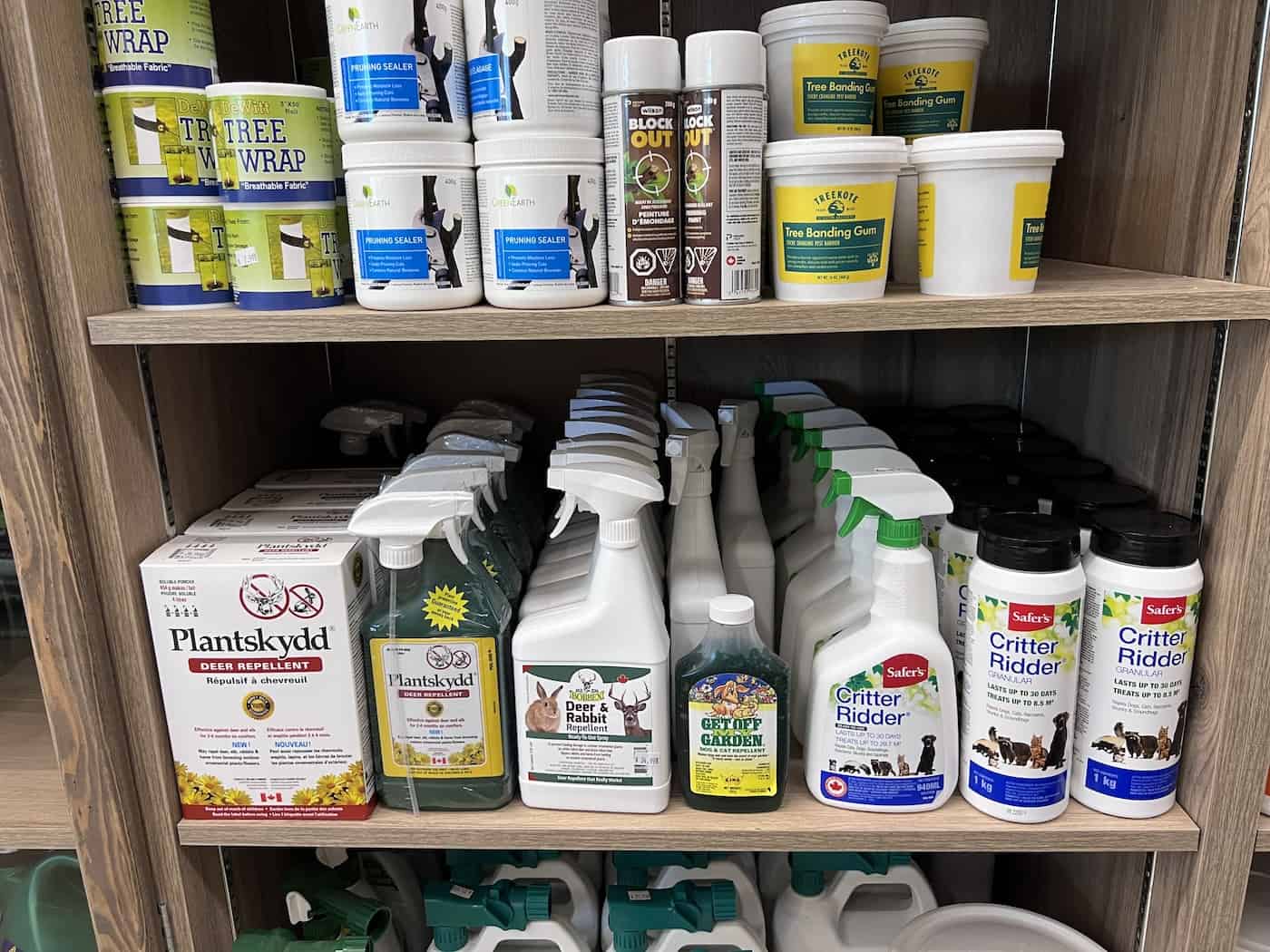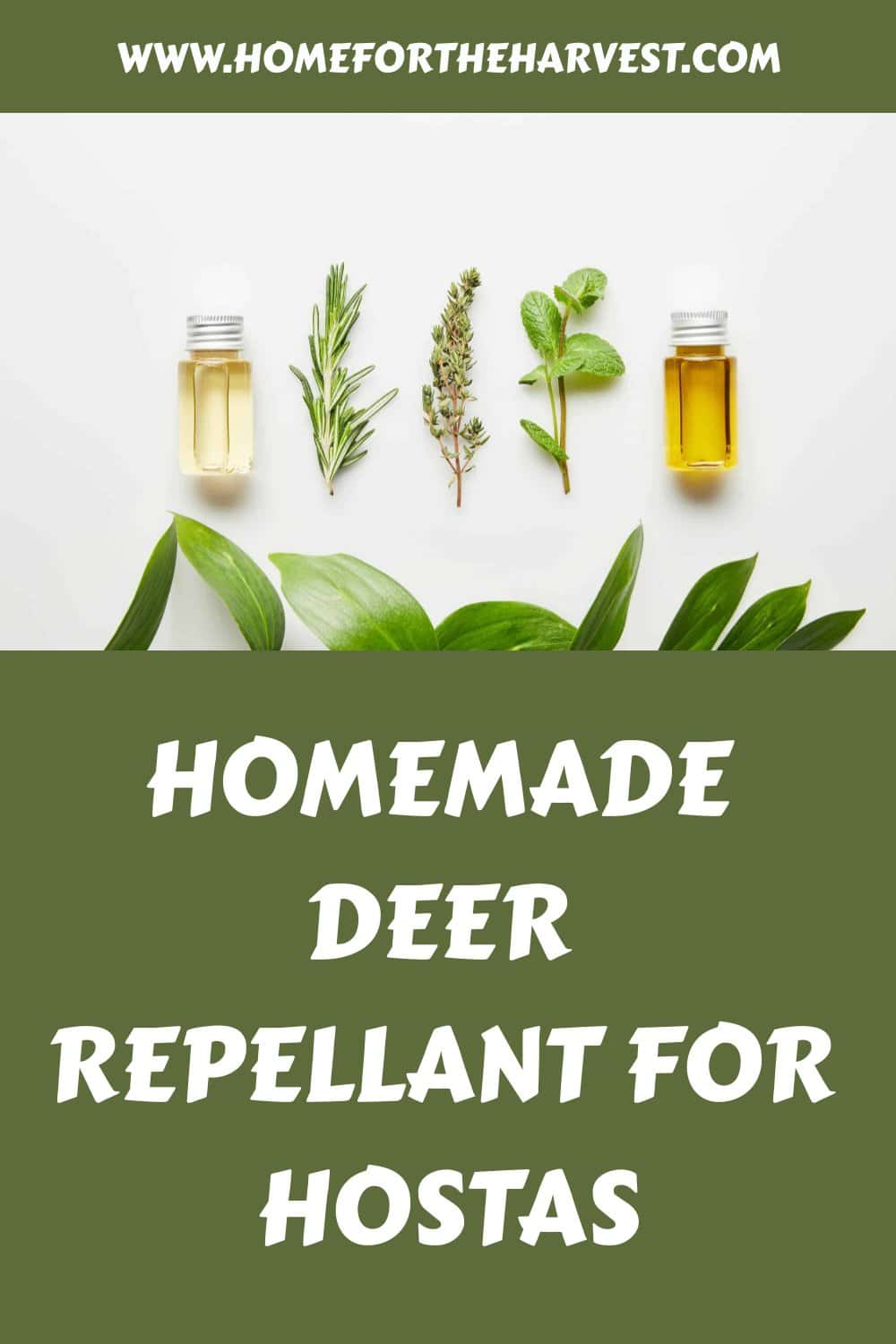Get ready to roll up your sleeves and dive into the world of DIY deer repellents! If you’re tired of those four-legged visitors munching on your beloved garden, this post is your secret weapon. I’ll guide you through easy, effective, and budget-friendly recipes to keep deer at bay. Let’s mix, blend, and create some potions to protect our green havens – all from the comfort of our kitchens!

Homemade deer repellents for hostas
Deer are known for their keen sense of smell (as well as for their love of eating hostas). So, the one common factor all these recipes have in common is that they’re made from natural ingredients known for their potent aromas that naturally repel deer.
For making deer repellant at home, you’ll need a 1-gallon jug, a spray bottle, and a blender or handheld mixer. Once you combine the ingredients, you can spray them around the hosta plants, as well as other plants that deer love to munch on. Then, reapply once a week or anytime after a rain or overhead irrigation.
Let’s get mixing.
1. Clove spray
You need essential oil of clove to make this recipe work. Combined with other scents, clove leaves a lingering odor that will keep deer far away from your hostas for up to a couple of weeks.
In a blender, combine one cup of sour cream, two beaten eggs, and 1/4 teaspoon liquid dish soap. Mix until well blended, then add 20 drops of clove essential oil. Place the mixture in the jug, put the top on, and shake all the ingredients together. Then, carefully pour the mixture into the spray bottle.
Keep in mind that this mixture is thick. So, you’ll need to give it a nice shake every time you spray it. If you find yours too thick, either thin it out with some water or paint it on with a foam paintbrush from the craft store.
2. Hot sauce spray
Most deer hate strong, spicy scents. To start off, place three raw eggs in the blender along with three tablespoons of minced garlic. Next, add three tablespoons of hot sauce. You can use any type you like, but the hotter it is, the more effective the results.
Blend everything together until they make a smooth paste. Place the mixture in the jug, then fill it up with water. Close the jug and give it a good shake. Next, pour some into the spray bottle and apply on and around the hosta plants.

3. Spicy garlic spray
This is another garlic pepper spray, but this one uses powdered cayenne from the spice drawer. And even better, the longer the spray sits, the more pungent the smell will be.
Here’s what you need:
- Three cloves crushed garlic
- Three eggs
- Three tablespoons milk or yogurt
- Three tablespoons cayenne pepper
- A strainer
First, put all the ingredients listed below in the blender. Puree them into a paste, then strain them into the jug. Next, add warm water to fill the jug and shake thoroughly.
4. Egg spray
This is a more basic recipe that requires only a few simple ingredients. Start by mixing an egg, a tablespoon of cooking oil, a tablespoon of dish soap, and half a cup of milk in the blender. Next, place the mixture in the jug and shake it well.
Then, pour some into a spray bottle and apply it around your yard, focusing on areas surrounding the hostas. This mixture is a bit runny and washes away easily, so reapply often.

5. Peppermint and rosemary spray
Like clove, peppermint and rosemary are two strong-smelling essential oils. Not only do they carry a potent scent, but they’re also long-lasting. You can easily make this recipe in small batches.
Get a spray bottle and pour in eight ounces of white vinegar. Next, add six drops of peppermint and four drops of rosemary essential oils. Cover the bottle well and give it a nice shake. Then, start spraying the areas around the hostas. Reapply once a week.

More about deer repellant sprays
If these DIY sprays prove ineffective against the particular deer in your neighborhood, you may need to move on to a more potent commercial spray. There are gentle, natural options available, as well as chemical-based repellants and biological agents.
Of these sprays, I’ve found both Bobbex and Plantskydd to be effective in my garden. These sprays can be unpleasant and sticky and sometimes need to be applied with a foam paint brush or rag attached to a stick.
When applying deer repellant spray, focus not only on the foliage of the plant but also on any surfaces nearby that are less likely to be washed by rainfall. This should help the longevity of the scent. Areas like fence undersides and shaded tree trunks can work well. You’ll know you’ve effectively applied the scent if neighborhood dogs go a bit nutty as they pass your yard.







